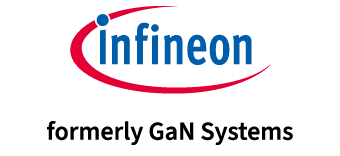Observations about the impact of GaN technology
This article, based on an interview with 氮化镓系统 (GaN Systems)’ CEO, Jim Witham, was originally authored by Paul O’Shea and published in powerelectronicsnews.com.
As author Jeremey Rifkin put it, we are in the midst of the 3rd industrial revolution. The first was the mechanization of the textile industry, followed by the age of mass production where capital was pooled and our infrastructure was built. Today, with the convergence of all things digital – such as manufacturing and control systems, big data and the interconnectedness of populations – we must find ways to sustainably power our exponentially growing digital ecosystem without exhausting our resources.
The world already consumes too much energy, and as populations grow globally and third world countries industrialize, ever more power will be required…unless something changes. The growth of datacenters will demand more power. More stringent government emissions regulations further compound matters for manufacturing and transportation. The bottom line is that our current energy consumption rate is unsustainable. So by contributing to the development of more efficient power systems, 氮化镓系统 (GaN Systems) is part of the solution to reducing global power consumption.
What is all the recent excitement about GaN-on-Si transistors, and can you give some examples of where they are being applied?
GaN power transistors are now commercially available, and they have several key attributes driving their adoption by power design engineers. GaN transistors are 25% to 50% more efficient than legacy power management ICs such as IGBTs and MOSFETs. They respond, or switch much faster than their legacy predecessors. They exhibit extremely low on-resistance, and have the industry’s highest figure of merit, which is a widely accepted measure of the suitability of a semiconductor material for high frequency power transistor applications. Power design engineers are excited because GaN transistors allow them to design more efficient, lighter, more compact, and less costly power systems.
So the impact of adopting GaN transistors on commercial systems is profound. Engineers can easily increase the amount of power generated 5X in the same volume. This is not theoretical, we’ve been showing customer-designed systems for 2 years. Conversely, the same amount of power can now be produced by systems 80% smaller. Transportation systems using GaN are lighter, can travel further, and can be charged faster. Datacenters are reducing power consumption, and saving rack space, which allows them to generate more revenue. Energy storage systems are being charged faster, and can store 5X the power in a given form factor. Wireless charging of devices ranging from laptops and phones to drones and automobiles can be performed much more efficiently. We see engineers propose new applications almost daily.
How is this transition to more efficient systems impacting our world?
On the micro scale, 氮化镓系统 (GaN Systems) is at the vanguard of a major transition from legacy power transistors constructed with silicon, to GaN-on-silicon transistors with all of its attendant benefits that allow power design engineers to build higher efficiency systems that consume and waste less power. By designing GaN-based power systems that require fewer components, are more compact, and lighter, manufacturers enjoy an important secondary effect: by adopting GaN technology, they gain a significant competitive advantage both in performance and gross margins.
On a macro scale the impact is even more profound. By facilitating the development of more efficient systems, our customers are now delivering state-of-the-art solutions across the consumer, datacenter, industrial, transportation and wireless charging markets. In effect, we actually are working to make the world a better place.
That’s a strong statement. Can you site some specific market implications for GaN transistors?
Quite a number of forecasts have been published recently on this topic. The applications most frequently mentioned where GaN transistors have, and will continue to have a major impact, are wireless charging, distributed grids, datacenters, and in the EV and HEV markets where the reduction of CO2 emissions is imperative.
For instance, in datacenters it has been estimated that for every 10 watts of power generated, 3 watts are consumed and 7 watts are wasted! By replacing legacy power management solutions with GaN transistors, only 1/3 the number of datacenters would be needed. I can think of few technologies that would improve our lives and our world at such a scale.
Are there challenges for implementing GaN technology?
Our task is to make the best transistors available and to make them easy to use. Our first challenge is educating power system design engineers about the benefits of GaN technology – increased system efficiency and power density, reduced system size, weight, & BOM.
The second challenge is helping engineers understand how to replace legacy components such as MOSFETs and IGBTs with GaN devices. Because GaN transistors have dv/dt rates 10 to 100 times faster than MOSFETs, they cannot be substituted without making some design changes. In fact, the slew rate is so fast, it can be difficult to measure! In order to reduce electromagnetic interference, GaN transistors have different requirements for both gate drive circuitry and PCB layout. To address these challenges, 氮化镓系统 (GaN Systems) and our distribution network are dedicated to helping customers solve their design challenges. Having said that, our customers expect that the design challenges are significant, but actually they’re quite easy.
What market impact have GaN transistors had to date?
The market impact is well underway. As more engineers appreciate the benefits of GaN transistors, we see them eagerly applying GaN solutions in diverse applications that include datacenters, consumer and industrial devices, transportation and wireless charging. Though there aren’t hundreds of millions of revenue dollars from GaN transistors yet, major semiconductor companies, including our customers, have already started major shifts. Let’s look at the evidence:
Since releasing our first products in 2014, our customer base has increased 5x to over 1300 customers. This includes the market leaders in datacenter power, automotive electronics, consumer TV’s, adapters, wireless charging, solar and energy storage devices.
Our customers have reduced their systems 5x in size and 4x in weight, while simultaneously reducing BOM cost.
Silicon suppliers are scrambling to build, buy or partner with GaN suppliers.
The entire EV industry has converged on GaN solutions for charger and DC/DC applications for both 48V -where SiC has no home – and for higher voltage EV systems.
Given this growing momentum, could you speculate about the market impact of GaN transistors over the near-term and 氮化镓系统 (GaN Systems)’ role?
Near-term is now-term. For the next few years you’ll first see 10’s, and then 100’s of applications released to the market. Though 氮化镓系统 (GaN Systems) won’t be the only supplier, we will have the majority share because customers value the three things we provide: (1) 650V products, which are required for more than ½ the overall market, (2) packaging that optimizes both electrical and thermal performance, and (3) high enough current capability to work from 10W to 100kW.
I expect revenue to grow from the 10’s of millions to the 100’s of millions, eating into the existing silicon market in areas such as solar, datacenter, and motors, but also expanding the total market for power electronics in other areas, like EV’s, wireless charging, and energy storage. While the consumer and datacenter solutions will lead the revenue, our industrial customers will continue inventing, filing IP, developing, qualifying and getting their products market-ready.
From 2018 to 2021 the overall discrete semiconductor market should expand from $17B to perhaps $22B due to the proliferation of EV’s and energy storage. During that time, any company without a rich portfolio of GaN transistors will have lost significant market share. We’ll see new companies arise, new partnerships forged, new packaging technology become mainstream, and GaN will capture more than 15% of the overall market. Silicon carbide will play a role, but its growth will be limited by its overall cost and its performance relative to GaN. Companies without GaN will acquire it through mergers and acquisitions, or they’ll be acquired due to their diminished valuation as a result of reduced growth and fallen margins. Should be exciting times!


